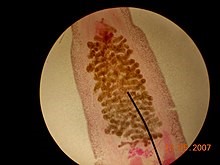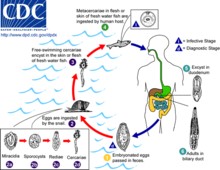
January 8, 2024 Puzzle Piece
PARASITES and A NEW THERAPY – To be Released at Homecoming 2024
Recently
I tested a new patient with chronic pain and disability with my QI5. I
have been using 6 generations of electrodermal testing and treating.
The QI5 is the most advanced I have utilized. I screen each new patient
with it and test/treat almost all of my patients with this device along
with all Six Steps.
Also, I listened to a podcast from two parasitologists this year
that demonstrated what I have been testing, treating, and teaching for
most of my 52 years of practice. There are few of us that do not have
some type of parasite in us. Those of you that allow your dogs and/or
cats sleep with you are almost certain to be infested.
OHS’s Opti-Para is the most updated of the 4 generations of
anti-parasitic I have formulated. It is the best of the best I have
utilized. However, since Covid, it has not always been enough. Now,
OHS has formulated a pearl of Black Seed Cumin Oil that Dr Jeneene
Ridgeway found extremely helpful in her practice. Together with the
Opti-Para, we have seen previously almost hopeless cases turn around.
I had to look this parasite up as I had not seen it surface before on my QI5. Below is what I discovered:
Clonorchis sinensis
21 languages
From Wikipedia, the free encyclopedia
Clonorchis sinensis
 |
| An adult Clonorchis sinensis has
these main body parts: oral sucker, pharynx, caecum, ventral sucker,
vitellaria, uterus, ovary, Mehlis' gland, testes, excretory bladder.
(H&E stain) |
| Scientific classification |
| Domain: |
Eukaryota |
| Kingdom: |
Animalia |
| Phylum: |
Platyhelminthes |
| Class: |
Trematoda |
| Order: |
Plagiorchiida |
| Family: |
Opisthorchiidae |
| Genus: |
Clonorchis |
| Species: |
C. sinensis |
|
Binomial name
Clonorchis sinensis
Looss, 1907
|
We
are including much more than you may want to know, but I want you to
see a small part of the research that has been accomplished. Parasites are much more common and can cause many more health disasters than most people are aware of.
Clonorchis sinensis, the Chinese liver fluke,
that belongs to the class Trematoda, phylum Platyhelminthes. It infects
fish-eating mammals, including humans. In humans, it infects the
common bile duct and gall bladder, feeding on bile. It was discovered by
British physician James McConnell at the Medical College Hospital in
Calcutta (Kolkata) in 1874. The first description was given by Thomas
Spencer Cobbold, who named it Distoma sinense. The fluke passes
its lifecycle in three different hosts, namely freshwater snail as
first intermediate hosts, freshwater fish as second intermediate host,
and mammals as definitive hosts.
Endemic to Asia and Russia, C. sinensis is the most prevalent
human fluke in Asia and third-most in the world. It is still actively
transmitted in Korea, China, Vietnam, and Russia. Most infections (about
85%) occur in China. The infection, called clonorchiasis, generally
appears as jaundice, indigestion, biliary inflammation, bile duct
obstruction, and even liver cirrhosis, cholangiocarcinoma, and hepatic
carcinoma.
As a major causative agent of bile duct cancer, the International Agency for Research on Cancer has classified C. sinensis as a group 1 biological carcinogen in 2009.
Discovery
The symptoms of C. sinensis infection (clonorchiasis) have been
known from ancient times in China. The earliest record is from corpses
buried in 278 BC at Jiangling County of Hubei Province and the Warring
States tomb of the western Han Dynasty. The parasite was discovered only
in 1874, though, by James McConnell, a professor of pathology and
resident physician at the Medical College Hospital in Calcutta. He
recovered the fluke from a 20-year-old Chinese carpenter who died on 8
September 1874. On autopsy, he observed that the corpse had a swollen
liver (hepatomegaly) and distended bile ducts, which he noted were
blocked by "small, dark, vermicular-looking bodies." He recovered the vermicules (worms) and compared them with known flukes Fasciola hepatica and Distoma lanceolatum. He concluded that the new fluke was significantly different. He published his observations in the 21 August 1875 issue of The Lancet.
Description
 Clonorchis sinensis under a light microscope.
Clonorchis sinensis under a light microscope.
The eggs are similar to those of other related flukes such as Opisthorchis viverrini and O. felineus,
and are often confused during diagnosis. They small and oval in shape,
measuring about 30 x 15 μm in diameter. They are sharply curved and with
a clear convex operculum towards the narrower end. At the broader end
is a stem-shaped knob. The miracidium can be seen inside the fertilised
egg.
Life cycle
 Lifecycle of C. sinensis
Lifecycle of C. sinensis
Production of eggs
The eggs of a C. sinensis are released through the biliary
tract, and excreted out along with the faeces. The eggs are embryonated
and contain the larvae called miracidia. Unlike most other flukes in
which the miracidia undergo development and swim in water to infect
suitable host, the eggs of C. sinensis are simply deposited in water. The eggs are then eaten by snails.
First intermediate host
Freshwater snail Parafossarulus manchouricus often serves as a first intermediate host.
Second intermediate host
When they detect fish, they attach themselves on the scales using their
suckers. Boring their way into the fish's body, they penetrate into the
fish muscle within 6 to 13 minutes. Within an hour of penetration, they
develop hard coverings called cysts and become metacercariae. This
protective cyst is useful when the fish muscle is consumed. The
metacercariae gradually develop and become infective to their next hosts
after 3 to 4 weeks.
Definitive host
Humans are the major definitive hosts. Infection occurs when raw or
undercooked fish contaminated with the metacercariae is eaten. The cysts
of the metacercariae are gradually digested by the human gastric acids,
and upon reaching the small intestines, the entire cyst is lost. The
free metacercariae penetrate the intestinal mucosa and enter the bile
ducts. Migration into the bile ducts takes 1–2 days. They start feeding
on the bile secreted from the liver, and gradually grow. They become
adults in about a month, and start laying eggs. The average lifespan of
an adult fluke is 30 years. An individual fluke can produce 4,000 eggs
in a day.
Other definitive hosts are fish-eating mammals such as dogs, cats, rats, pigs, badgers, weasels, camels, and buffaloes.
Prevalence
C. sinensis is estimated to be the third-most prevalent worm parasite in the world.
It is endemic to Russia, Japan, China, Taiwan, Korea, and Southeast
Asia, especially Vietnam. In Asia it is the most prevalent human
trematode, with over 15 million people estimated to be infected and 200
million people at constant risk of infection. China has the highest
incidence with about 13 million infections, accounting for 85% of the
total cases. Infection rates are generally higher in men, fishermen,
farmers, businessmen, and catering staff. The infection is more serious
in adults aged 40–60 and the elderly. More cases occur in low- or
middle-class countries, increasing the disease burden and creating
economic problems. Clonorchiasis causes 275,370 disability-adjusted life
years (DALY) globally. The calculated economic burden for treating
clonorchiasis-related ailments in the Guangdong Province of China alone
was $200 million by 2010.
The type of freshwater fishes and shrimp that are infected by C. sinensis contributes to the prevalence of infection. Commonly eaten fishes (e.g. C. idellus, C. auratus, H. nobilis, C. carpio, H. molitrix, and M. anguillicaudatus)
were found to have the metacercariae when sampled from lakes, rivers,
and markets. In total, almost 31 types of freshwater fish and shrimp
were found to carry the parasite.
Effects on human health
Main article: Clonorchiasis
Dwelling in the bile ducts, C. sinensis induces an inflammatory
reaction, epithelial hyperplasia, and sometimes
even cholangiocarcinoma, the incidence of which is raised in
fluke-infested areas.
One adverse effect of Clonorchis spp. is the possibility for
the adult metacercaria to consume all bile created in the liver, which
would inhibit the host human from digesting food, especially fats.
Another possibility is obstruction of the bile duct by the parasite or
its eggs, leading to biliary obstruction and cholangitis (specifically
oriental cholangitis).
Unusual cases of liver abscesses due to clonorchiasis have been
reported. Liver abscesses may be seen even without dilatation of
intrahepatic bile ducts.
Symptoms
While normally asymptomatic, most pathological manifestations result
from inflammation and intermittent obstruction of the biliary ducts. The
acute phase consists of abdominal pain with associated nausea and
diarrhea. Long-standing infections consist of fatigue, abdominal
discomfort, anorexia, weight loss, diarrhea, and jaundice. The pathology
of long-standing infections consist of bile stasis, obstruction,
bacterial infections, inflammation, periductal fibrosis, and
hyperplasia. Development of cholangiocarcinoma is progressive.
Diagnosis and treatment
Infection is detected mainly on identification of eggs by microscopic
demonstration in faeces or in duodenal aspirate, but other sophisticated
methods have been developed, such as ELISA, which has become the most
important clinical technique. Diagnosis by detecting DNAs from eggs in
faeces are also developed using PCR, real-time PCR, and loop-mediated
isothermal amplification, which are highly sensitive and specific.
Typical imaging features center around imaging of
the liver with CT, ultrasound, or MRI for detection of primary biliary
cirrhosis. Traits that raise suspicion for the infection include intra-
and extrahepatic dilatation and structures with intraductal pigmented
stones, usually in the absence of gallstones and
References
- Yoshitaka,
Komiya (1967). "Clonorchis and clonorchiasis". In Dawes, Ben
(ed.). Advances in Parasitology Volume 4. Burlington: Elsevier.
pp. 53–101. ISBN 978-0-08-058050-0.
- Wu
W, Qian X, Huang Y, Hong Q (2012). "A review of the control
of Clonorchiasis sinensis and Taenia solium taeniasis/cysticercosis in
China". Parasitology Research. 111 (5): 1879–1884. doi:10.1007/s00436-012-3152-y. PMID 23052782. S2CID 14136962.
- Hong, Sung-Tae; Fang, Yueyi (2012). "Clonorchis sinensis and clonorchiasis, an update". Parasitology International. 61 (1): 17–24. doi:10.1016/j.parint.2011.06.007. PMID 21741496.
- Hong ST, Fang Y (2012). "Clonorchis sinensis and clonorchiasis, an update". Parasitology International. 61 (1): 17–24. doi:10.1016/j.parint.2011.06.007. PMID 21741496.
- Sripa
B, Brindley PJ, Mulvenna J, Laha T, Smout MJ, Mairiang E, Bethony JM,
Loukas A (2012). "The tumorigenic liver fluke Opisthorchis
viverrini--multiple pathways to cancer". Trends in Parasitology. 28 (10): 395–407. doi:10.1016/j.pt.2012.07.006. PMC 3682777. PMID 22947297.
- American
Cancer Society (2013). "Known and Probable Human
Carcinogens". cancer.org. American Cancer Society, Inc. Archived
from the original on 2014-11-17. Retrieved 2013-06-02.
- Qian, Men-Bao; Utzinger, Jürg; Keiser, Jennifer; Zhou, Xiao-Nong (2016). "Clonorchiasis". The Lancet. 387 (10020): 800–810. doi:10.1016/S0140-6736(15)60313-0. PMID 26299184. S2CID 208794050.
- Yoshida,
Yukio (2012). "Clonorchiasis—A historical review of contributions of
Japanese parasitologists". Parasitology International. 61 (1): 5–9. doi:10.1016/j.parint.2011.06.003. PMID 21749930.
- Sripa,
Banchob; Tesana, Smarn; Yurlova, Natalia; Nawa, Yukifumi (2017). "A
historical review of small liver fluke infections in
humans". Parasitology International. 66 (4): 337–340. doi:10.1016/j.parint.2017.01.004. PMID 28069407.
- Kim,
TS; Pak, JH; Kim, JB; Bahk, YY (2016). "Clonorchis sinensis, an
oriental liver fluke, as a human biological agent of cholangiocarcinoma:
a brief review". BMB Reports. 49 (11): 590–597. doi:10.5483/BMBRep.2016.49.11.109. PMC 5346318. PMID 27418285.
- Adams,
Ann M. (2006). "Foodborne trematodes". In Ortega, Ynes R.
(ed.). Foodborne Parasites. New York: Springer Science+Business Media.
pp. 168–173. ISBN 978-0-387-31197-5.
- Bogitsh,
Burton Jerome; Carter, Clint Earl; Oeltmann, Thomas N. (2005). Human
Parasitology (3 ed.). Amsterdam: Elsevier Academic Press.
pp. 207–210. ISBN 978-0-12-088468-1.
- Ridley,
John W. (2012). Parasitology for Medical and Clinical Laboratory
Professionals. Clifton Park, N.Y.: Delmar. pp. 187–188. ISBN 978-1-4-3544816-2.
- Clonorchis sinensis Archived 2008-03-17 at the Wayback Machine. Web Atlas of Medical Pathology, accessed 1 April 2009
- World Health Organization (1995). Control of Foodborne Trematode Infection. WHO Technical Report Series. 849. PDF part 1, PDF part 2. page 125-126.
- Hung,
Nguyen; Dung, Do; Lan Anh, Nguyen; Van, Phan; Thanh, Bui; Van Ha,
Nguyen; Van Hien, Hoang; Canh, Le (2015). "Current status of fish-borne
zoonotic trematode infections in Gia Vien district, Ninh Binh province,
Vietnam". Parasites & Vectors. 8 (1): 21. doi:10.1186/s13071-015-0643-6. PMC 4299372. PMID 25586313.
- Tang,
Ze-Li; Huang, Yan; Yu, Xin-Bing (2016). "Current status and
perspectives of Clonorchis sinensis and clonorchiasis: epidemiology,
pathogenesis, omics, prevention and control". Infectious Diseases of
Poverty. 5 (1): 71. doi:10.1186/s40249-016-0166-1. PMC 4933995. PMID 27384714.
- Chai
JY, Darwin Murrell K, Lymbery AJ (2005). "Fish-borne parasitic
zoonoses: Status and issues". International Journal for Parasitology. 35 (11–12): 1233–1254. doi:10.1016/j.ijpara.2005.07.013. PMID 16143336.
- Sohn,
Woon-Mok (2009). "Fish-borne zoonotic trematode metacercariae in the
Republic of Korea". The Korean Journal of Parasitology. 47 (Suppl): S103-113. doi:10.3347/kjp.2009.47.S.S103. PMC 2769214. PMID 19885326.
- Fattakhov,
RG; Ushakov, AV; Stepanova, TF; Ianovich, VA; Kopylov, PV (2012).
"Epizootiological characteristics of clonorchiasis foci in the Amur
River ecosystem in the Jewish autonomic region". Meditsinskaia
Parazitologiia I Parazitarnye Bolezni (4): 15–18. PMID 23437716.
- Kim,
Jae-Hwan; Choi, Min-Ho; Bae, Young Mee; Oh, Jin-Kyoung; Lim, Min Kyung;
Hong, Sung-Tae; Ito, Akira (2011). "Correlation between Discharged
Worms and Fecal Egg Counts in Human Clonorchiasis". PLOS Neglected
Tropical Diseases. 5 (10): e1339. doi:10.1371/journal.pntd.0001339. PMC 3186755. PMID 21991401.
- Tang,
Ze-Li; Huang, Yan; Yu, Xin-Bing (2016). "Current status and
perspectives of Clonorchis sinensis and clonorchiasis: epidemiology,
pathogenesis, omics, prevention and control". Infectious Diseases of
Poverty. 5 (1): 71. doi:10.1186/s40249-016-0166-1. PMC 4933995. PMID 27384714.
- Kumar et al.: Robbins & Cotran Pathologic Basis of Disease 7E
- Jang,
Yun-Jin; Byun, Jae Ho; Yoon, Seong Eon; Yu, EunSil
(2007-01-01). "Hepatic Parasitic Abscess Caused by Clonorchiasis:
Unusual CT Findings of Clonorchiasis". Korean Journal of Radiology. 8 (1): 70–73. doi:10.3348/kjr.2007.8.1.70. ISSN 1229-6929. PMC 2626702. PMID 17277566.
- Dr. Kuo, O. Sinensis Lecture, ATSU School of Osteopathic Medicine Arizona, June 2012
- Park,
MS; Yu, JS; Kim, KW; Kim, MJ; Chung, JP; Yoon, SW; Chung, JJ; Lee, JT;
Yoo, HS (September 2001). "Recurrent pyogenic cholangitis: comparison
between MR cholangiography and direct cholangiography". Radiology. 220 (3): 677–82. doi:10.1148/radiol.2202001252. PMID 11526266.
- Xu
LL, Xue J, Zhang YN, Qiang HQ, Xiao SH (2011). "In vitro effect of
seven anthelmintic agents against adult Clonorchis sinensis". Zhongguo
Ji Sheng Chong Xue Yu Ji Sheng Chong Bing Za Zhi. 29 (1): 10–15. PMID 21823316.
- Park,
Gab-Man; Im, Kyung-il; Huh, Sun; Yong, Tai-Soon (2000). "Chromosomes of
the liver fluke, Clonorchis sinensis". The Korean Journal of
Parasitology. 38 (3): 201–6. doi:10.3347/kjp.2000.38.3.201. PMC 2728209. PMID 11002660.
- Wang,
Xiaoyun; Chen, Wenjun; Huang, Yan; Sun, Jiufeng; Men, Jingtao; Liu,
Hailiang; Luo, Fang; Guo, Lei; et al. (2011). "The draft genome of the
carcinogenic human liver fluke Clonorchis sinensis". Genome Biology. 12 (10): R107. doi:10.1186/gb-2011-12-10-r107. PMC 3333777. PMID 22023798.
- Huang,
Yan; Chen, Wenjun; Wang, Xiaoyun; Liu, Hailiang; Chen, Yangyi; Guo,
Lei; Luo, Fang; Sun, Jiufeng; Mao, Qiang; Liang, Pei; Xie, Zhizhi; Zhou,
Chenhui; Tian, Yanli; Lv, Xiaoli; Huang, Lisi; Zhou, Juanjuan; Hu, Yue;
Li, Ran; Zhang, Fan; Lei, Huali; Li, Wenfang; Hu, Xuchu; Liang, Chi;
Xu, Jin; Li, Xuerong; Yu, Xinbing; Ralph, Stuart Alexander (30 January
2013). "The Carcinogenic Liver Fluke, Clonorchis sinensis: New Assembly,
Reannotation and Analysis of the Genome and Characterization of Tissue
Transcriptomes". PLOS ONE. 8 (1): e54732. Bibcode:2013PLoSO...854732H. doi:10.1371/journal.pone.0054732. PMC 3559784. PMID 23382950.
Come
and join Dr Marc Harris, Doug Grant, Dr Brett Brimhall, Dr Patrick
Porter, Dr Vaughn Cook, myself and many of our co-teachers this year at
Homecoming 2024 and in our Optimal Health Systems seminars and
webinars. Call my office at 480-964-5198 or OHS’s office at
800-890-4547 to get a full schedule.
Don’t wait! Call, register, attend, learn, apply and increase all areas
of your prosperity. This year must be about YOUR HEALTH and WELLNESS
also! You have to take care of yourself too!!!!!!!!!!!!!!!!!!!!!!!!!!!!
SCHEDULE
TO BE SEEN THURSDAY AFTERNOON UNTIL ALL OF THE DOCTORS ARE FULL AND I
WILL BE TESTING AND TREATING IN SOME OF MY CLASSES.
SEE YOU AT HOMECOMING!
ALSO, DOCTORS AND PRACTITIONERS HAVE BEEN REQUESTING A COMPLETE CERTIFICATION SIX STEPS SEMINAR FROM DR JOHN BRIMHALL. HE HAS AGREED TO DO A 3-DAY HANDS ON SEMINAR IN ARIZONA, PROJECTED DATE APRIL 18-20, 2024
TO THOSE THAT REALLY WANT TO MASTER THE SIX STEPS TO WELLNESS AND APPLY
IT IN THEIR LIVES AND OFFICES. CONTACT JASON AT 480-964-5198 TO GET ON
THE LIST. THIS WILL BE A SMALL DEDICATED GROUP WITH THE ONE-ON-ONE
FEELING AND INSTRUTION FROM DR JOHN.
It is not a matter of where you are now, but how far you want to progress in your ability to help your patients.
Homecoming is coming January 18-21, 2022. Please Register Today if you have not! We have many new innovations to share.

You will get to hear from many different speakers who are all well
renowned in their specific areas of study. You’ll be taught many
different topics that will help you become a master at navigating the
bio-terrain, detoxification, regeneration, and restoration.
Click Here To Download the 2024 Brimhall Homecoming Seminar Itinerary.
Yours in Health and Wellness,
John W Brimhall, DC, BA, BS, FIAMA, DIBAK, Formulator, Patent Holder
(Only registered customers can rate)
There are no comments for this product.